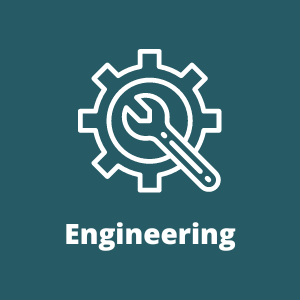
The are many types of engineering, Mechanical, Electrical, Civil and Chemical being the main ones you may have heard about.
On the A9 dualling project there are over 800 people employed to work in various disciplines and a number of those are engineers.
Some of the types of engineers are water engineer, transport engineer, geotechnical engineer, highways engineer, structural engineer, bridge engineer, electrical engineer.
With the exception of the electrical engineers all of these engineers will have studied to gain a civil engineering qualification. For more information on careers related to the A9 see our careers page.
Below there are a number of possible lesson plans to help teach some engineering concepts in the context of the A9 dualling project. The possible Es and Os which could be covered by these are listed next to the resource.

9 Facts (P5-P7 level 2 CfE)
9 Facts is fun interactive numbers game. Each pupil/group of pupils get a board with numbers on it.
The teacher reads out the numbered facts about the A9 dualling project and if the pupils have the number they put a counter on it.
First to fill up the board and shout ‘A9’ wins.
Es and Os, MNU 2-02a, LIT 2-06a, LIT 2-09a, LIT 2-10a

Think Like An Engineer Activity (P5-P7 level 2 CfE)
‘Think Like An Engineer’ is an activity which gives a real insight into the role of an engineer.
In this activity you will look at road route options and what information engineers use to find out the best option.
Es and Os, HWB 2-20a, MNU 2-20a, MNU 2-20b, MNU 2-03a, SOC 2-08a, SOC 2-08b, TCH 2-02a, TCH 2-13a, TCH 2-12a.

Traffic Data Analysis Activity (P4-P7 level 1/2 CfE)
Transport Scotland carry out regular monitoring of traffic on the A9.
This activity involves analysing the traffic data in an Excel spreadsheet in order to answer questions.
Es and Os, MNU 1-20a/2-20a

How to build a ‘core’ piece of road (P5-P7 level 2 CfE)
If you would like to learn about the different layers that make up a road, this activity is for you!
Some of the words are tricky so use the glossary to help you.
Es and Os, TCH 2-10a, TCH 2-12a, SCN 2-17a

Bridge Building (P5-P7 level 2 CfE)
This activity will teach you the strongest shape to build a bridge with.
You will use trusses to build the edges of your bridge then the fun bit; testing how much weight your bridge can hold!
Es and Os, TCH 2-09a, TCH2-12a


Traffic Data Analysis Activity (S1-S6)
Transport Scotland carry out regular monitoring of traffic on the A9.
This activity involves analysing the traffic data in an Excel spreadsheet in order to answer questions.
Es and Os, MNU 4-20a

How Technology Is Used In Our Roads (S2 upwards)
This document provides a short outline of how technology is used on our roads.
This could be useful for STEM teachers trying to engage their class and provide context or by pupils as the beginning of a research study.
Es and Os, TCH2-05a, 3-05a 4-05a

3D CAD Modelling In Road Construction (S3 upwards)
This is an interactive activity that gives insight into how engineers produce 3D visualisations of their designs, as can be seen here:
Visualisations of the engineer’s design options are important as it helps other professionals (for example Landscape Architects), stakeholders and the public envisage what the proposals may look like and therefore facilitates the understanding of the potential changes.
Below is a step by step guide to using CAD drawings with Google Earth to view designs for the A9 Dualling project.
Es and Os, TCH 4-07a, TCH 4-11a, TCH 4-12a

SQA Level 4 Civil And Infrastructure Engineering Projects (S3-S6)
We have developed an SQA qualification worth 2 SCQF credit points translates to 2.75 Insight tariff points to support pupils in learning about Civil and Infrastructure Engineering.
This course covers what these projects are, the careers involved with them and some of the challenges faced in these types of projects.
Es and Os, HWB 4-20a, TCH 4-12a, TCH 4-11a, SOC 4-09b, SOC 4-10b, LIT 4-15a, LIT 4-24a, SOC 3-14a
CLICK HERE to access Learner Resources
CLICK HERE to access Educator Resources

The A9 dualling
The A9 dualling project could make for an interesting case study for pupils of any age or stage.
Find pupil appropriate information about the project here.
Department for Transport Traffic Count
This website shows a map of Scotland with small circles at certain points on the trunk road network.
These circles indicate locations of manual traffic counters and when clicked on provide information of the road classification at that location.
By clicking on the circle and scrolling to the bottom of the pop-up historical traffic flow data can be found.
This information is used by a number of professionals working on the A9 Dualling Perth to Inverness projects.
Traffic flow information provides a picture of the road use and how this changes across time. The information can also be used by transport planners and economists to model how proposals may change the travel patterns.
Specialists within environmental teams (such as noise analysts) can then use this information to assess potential impacts on the surrounding environment.
CLICK HERE to access the website
Sustrans Cycle Route Map
The Sustrans Cycle Route Website is a map off the UK with purple and green lines that indicate routes for cyclists.
This information is used by a number of professionals working on the A9 Dualling Perth to Inverness projects to identify important features and facilities within the area surrounding the road.
The A9 and adjacent facilities (like the National Cycle Network Route 7) is used not only by cars but by cyclists, horse riders and people on foot.
The A9 is also often a starting point for hill walkers. Holidays and tourist activities centred around these activities are popular in Scotland and the design of the new route aims to ensure people can continue to use these.
CLICK HERE to access the website
Design Manual for Roads and Bridges (DMRB)
The Design Manual for Roads and Bridges (DMRB) is a series of 15 volumes that provide standards, advice notes and other documents relating to the design, assessment and operation of trunk roads, including motorways in the United Kingdom.
As part of the DMRB process, three stages of assessment are undertaken and reported on.
Strategic Transport Projects Review 2, (STPR2)
This is Scottish Governments’ most recent review or transportation infrastructure in Scotland.
The project pages for this review contain lots of region specific information about the future of transportation in Scotland.
CLICK HERE to access the website










